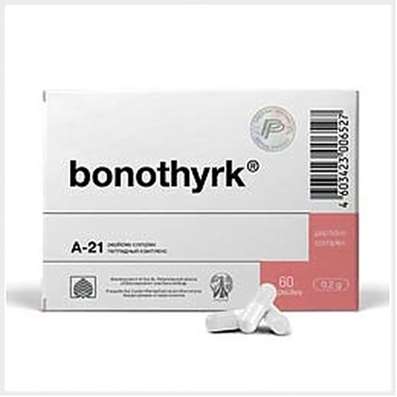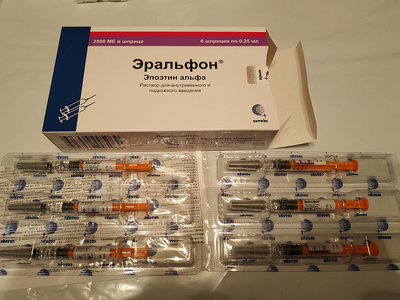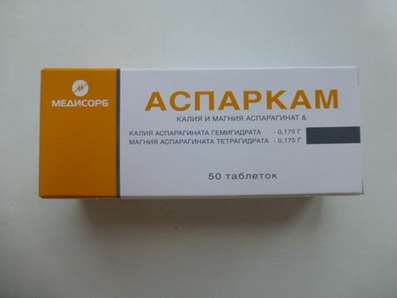Instruction for use: Phenindione
I want this, give me price
Trade name of the drug – Phenylin
The Latin name of the substance Phenindione
Phenindionum (genus. Phenindioni)
Chemical name
2-Phenyl-1H-indene-1,3 (2H) –dione
Gross formula
C15H10O2
Pharmacological group:
Anticoagulants
The nosological classification (ICD-10)
I26 Pulmonary embolism: Recurrent thromboembolism of the pulmonary artery; Recurrent pulmonary embolism; Thromboembolism of the branches of the pulmonary artery; Thromboembolism of the lungs; Thromboembolism of the pulmonary artery (PE); Thrombosis of the pulmonary artery; Thromboembolism; Thromboembolism of the pulmonary artery; Thromboembolism; Pulmonary embolism; Thromboembolism of the pulmonary artery and its branches; Thromboembolism of pulmonary vessels; Embolism of the lung; Embolism of the pulmonary artery; Acute massive thromboembolism of the pulmonary artery
I63 Cerebral infarction: ischemic Stroke; Ischemic brain disease; Ischemic stroke; Ischemic stroke and its consequences; Ischemic cerebral stroke; Ischemic cerebrovascular accident; Ischemic brain damage; Ischemic brain damage; ischemic conditions; Cerebral ischemia; Acute hypoxia brain; Acute cerebral ischemia; Acute ischemic cerebrovascular accident; Acute cerebral infarction; Acute ischemic stroke; Acute period of ischemic stroke; Focal cerebral ischemia; Ischemic stroke; recurrent stroke; The syndrome of Morgagni-Adams-Stokes; Chronic cerebral ischemia; cerebrovascular stroke; embolic stroke; Ischemic brain damage
I74 Embolism and arterial thrombosis: Thrombosis of effort (stress); Arterial thrombosis; Arteriothrombosis; Subacute and chronic arterial thrombosis; Subacute thrombosis of peripheral arteries; Postoperative thrombosis; Vascular thrombosis; Vascular embolism; Thrombosis of aortocoronary shunt; Arterial thrombosis; Thrombosis of arteries; Coronary artery thrombosis; Coronary thrombosis; Thrombosis of blood vessels; Thrombosis with ischemic stroke; Thrombosis with general surgical operations; Thrombosis in Oncology Operations; Vascular thrombosis; Thrombus formation in the postoperative period; Thrombotic complications; Thromboembolic diseases; Thromboembolic syndrome; Thromboembolic complication in the postoperative period; Thromboembolism of arteries; Partial vascular thrombosis; Embolism; Embolism of arteries
I80 Phlebitis and thrombophlebitis: Diseases of peripheral vessels; Inflammation of superficial veins; Inflammatory diseases of veins; Deep venous thrombophlebitis; The disease of veins; Disease of the veins of the lower extremities; Diseases of peripheral vessels; Migrating phlebitis; Insufficiency of veins of lower extremities; Exacerbation of chronic thrombophlebitis; Acute thrombophlebitis; Acute thrombophlebitis of superficial veins; Periphlebitis; Periflebit surface; Superficial inflammation of veins; Surface thrombophlebitis; Surface phlebitis; Thrombophlebitis; Deep vein thrombophlebitis; Thrombophlebitis superficial; Phlebitis; Phlebitis of deep veins; Phlebitis of superficial veins; Phlebopathy; Chronic thrombophlebitis; Endophlebitis
I82 Embolism and thrombosis of other veins: Recurrent venous thrombosis; Postoperative thrombosis; Venous thrombosis; Acute venous thromboembolism; Recurrent vein thrombosis; Venous thrombosis; Thrombosis of veins of internal organs; Venous thrombosis; Deep vein thrombosis; Thrombosis of blood vessels; Vascular thrombosis; Thrombosis of veins; Deep vein thrombosis; Thromboembolic diseases; Thromboembolism of veins; Severe venous thrombosis; Embolism; Embolism of veins; Thromboembolic complications
Z100 * CLASS XXII Surgical practice: Abdominal surgery; adenomectomy; Amputation; Coronary angioplasty; Angioplasty of the carotid arteries; Antiseptic skin treatment for wounds; Antiseptic Hand; Appendectomy; atherectomy; Balloon coronary angioplasty; Vaginal hysterectomy; The coronary bypass; Interventions in the vagina and cervix; Interventions on the bladder; Intervention in the mouth; Restoration and reconstructive surgery; Hand hygiene of medical personnel; Gynecologic surgery; Gynecological intervention; Gynecological surgery; Hypovolemic shock during operations; Disinfection of purulent wounds; Disinfection of wounds edges; Diagnostic intervention; Diagnostic procedures; Cervical Diathermocoagulation; Long-surgery; Replacing the fistula catheters; Infection in orthopedic surgery; Artificial heart valve; cystectomy; Short-term outpatient surgery; Short-term operation; Short surgical procedures; Krikotireotomiya; Blood loss during surgery; Bleeding during surgery and in the postoperative period; Kuldotsentez; laser photocoagulation; laser coagulation; retinal laser coagulation; Laparoscopy; Laparoscopy in Gynecology; CSF fistula; Small gynecological operations; Small surgical procedures; Mastectomy and subsequent plastic; mediastinotomy; Microsurgical operations on the ear; Mukogingivalnye operation; suturing; Minor surgery; neurosurgical operation; Immobilization of the eyeball in ophthalmic surgery; testectomy; pancreatectomy; Perikardektomiya; The period of rehabilitation after surgery; The period of convalescence after surgery; Percutaneous transluminal coronary angioplasty; Pleural thoracentesis; Pneumonia postoperative and posttraumatic; Preparation for surgical procedures; Preparation for surgery; Preparation of the surgeon's hands before surgery; Preparation of the colon for surgical procedures; Postoperative aspiration pneumonia in neurosurgical and thoracic surgery; Postoperative nausea; Postoperative bleeding; postoperative granuloma; postoperative shock; The early postoperative period; myocardial revascularization; Radiectomy; gastric Resection; bowel resection; uterine Resection; liver Resection; enterectomy; Resection of part of the stomach; Reocclusion of the operated vessel; Bonding tissues during surgical procedures; Removal of sutures; Condition after eye surgery; Condition after surgery; Condition after surgery in the nasal cavity; Condition after gastrectomy; Status after resection of the small intestine; Condition after tonsillectomy; Condition after removal of the duodenum; Condition after phlebectomy; Vascular surgery; Splenectomy; Sterilization of surgical instruments; Sterilization of surgical instruments; sternotomy; Dental surgery; Dental intervention in periodontal tissues; strumectomy; Tonsillectomy; Thoracic surgery; Thoracic surgery; total gastrectomy; Transdermal intravascular coronary angioplasty; Transurethral resection; Turbinektomiya; Removal of a tooth; cataract surgery; Removal of cysts; tonsillectomy; Removal of fibroids; Removing the mobile primary teeth; Removing polyps; Removing broken tooth; Removal of the uterus body; Removal of sutures; Fistula likvoroprovodyaschih ways; Frontoetmoidogaymorotomiya; Surgical infection; Surgical treatment of chronic limb ulcers; Surgery; The surgery in the anal area; The surgery on the colon; Surgical practice; The surgical procedure; Surgical interventions; Surgery on the gastrointestinal tract; Surgical procedures on the urinary tract; Surgical procedures on the urinary system; Surgical intervention of the genitourinary system; Surgical procedures on the heart; Surgical manipulation; surgery; Surgery on the veins; Surgical intervention; Vascular surgery; Surgical treatment of thrombosis; Surgery; cholecystectomy; Partial gastric resection; hysterectomy; Percutaneous transluminal coronary angioplasty; Percutaneous transluminal angioplasty; Coronary artery bypass; tooth Extirpation; Extirpation of milk teeth; pulpectomy; pulsative cardiopulmonary bypass; tooth Extraction; teeth Extraction; cataract extraction; Electrocoagulation; endourological intervention; episiotomy; Etmoidotomiya; Complications after tooth extraction
CAS code
83-12-5
Characteristics of substance Phenindione
White or creamy white crystals. Almost odorless. Very little soluble in water and alcohol. Solutions have a color ranging from orange to orange-red.
Pharmacology
Mode of action - Anticoagulant.
Due to a competitive antagonism with vitamin K it blocks K-vitamin reductase, disrupts the formation in the liver of its active form, necessary for the synthesis of prothrombin and other clotting factors (VII, IX, X). Quickly and fully absorbed. Passes histohematological barriers and accumulates in tissues. Metabolised in the liver. Excreted by the kidneys (including biotransformation products). Hypocoagulant effect (decrease in the concentration of clotting factors in the blood) occurs in 8-10 hours and reaches a maximum after 24-30 hours after administration. To control the anticoagulant activity, the prothrombin time is used; Reliable prophylaxis of venous thrombosis is achieved with an increase in PV in 2 times, arterial - 3-4 times (norm 11-14 s).
Application of substance Phenindione
Prophylaxis and treatment of thrombosis (especially deep veins of the lower extremities) and thrombophlebitis, thromboembolic complications (pulmonary embolism, embolic strokes, etc.) and thrombus formation in the postoperative period; Mechanical heart valve prostheses (constant reception), heparin therapy (combined use).
Contraindications
Hypersensitivity, hemorrhagic syndrome, the initial level of prothrombin less than 70%, pregnancy (I trimester).
Restrictions
Increased vascular permeability, impaired liver and kidney function, malignant neoplasms, erosive and ulcerative lesions of the gastrointestinal tract, pericarditis, the first days after childbirth.
Side effects of the substance Phenindione
Hemorrhagic syndrome (gastrointestinal, uterine, nasal bleeding, hematuria, hemorrhages in the muscles and parenchymal organs, etc.), oppression of hematopoiesis, dyspeptic disorders (diarrhea, nausea), toxic hepatitis, allergic reactions (hyperthermia, dermatitis).
Interaction
Enhance the effect of other anticoagulants, thrombolytic and antiaggregational agents, azathioprine, allopurinol, amiodarone, anabolic drugs, narcotic analgesics, androgens, antibiotics, tricyclic antidepressants, urine oxidizing agents, glucocorticoids, diazoxide, disopyramide, isoniazid, nalidixic acid, clofibrate, metronidazole, paracetamol, Reserpine, solutions of crystalloids, butadione, sulfonamides, tocopherol, disulfiram, quinidine, cyclophosphamide, cimetidine, thyroid hormones, weaken - urine alkalinizing agents, propranolol, antacids, phenazone, barbiturates, vitamins K and C, haloperidol, diuretics, carbamazepine, oral contraceptives , Meprobamate, rifampicin, colestyramine.
Overdose
Symptoms: hemorrhagic syndrome (gastrointestinal, uterine, nasal bleeding, hematuria, hemorrhages in the skin, muscles, parenchymal organs, etc.).
Treatment: vitamin K inside or IV; With the development of severe bleeding, vitamin K is applied iv slowly (1 mg / min) in a total dose of 10-50 mg (normalizes the increased prothrombin time within 6 hours). With massive bleeding or in patients with hepatic insufficiency, freshly frozen plasma is simultaneously used. Possible use of aminocaproic acid, vitamins C and P.
Routes of administration
Inside.
Precautions for the substance Phenindione
In addition to PV testing, strict medical supervision and regular extended coagulologic blood testing (coagulogram, thromboelastogram, platelet count) are necessary.
Special instructions
Therapy can be accompanied by the coloration of the palms in orange and urine - in pink.

 Cart
Cart





